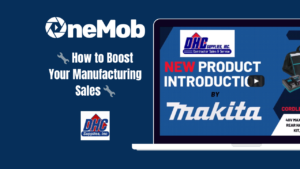Getting Started with Your Trading Card Business
Delving into the trading card business can be both an exciting and lucrative venture. This niche market has seen a significant resurgence, with rare cards selling for millions and new releases generating immense excitement. Understanding the market dynamics, finding your niche, and setting up your business properly are critical steps to ensuring your venture’s success.
Understanding the Trading Card Market
The trading card market is vast, encompassing everything from sports cards to collectible card games like Magic: The Gathering. It’s a market driven by both nostalgia and the thrill of the hunt for rare finds. Factors such as rarity, condition, and demand determine a card’s value. It’s essential to keep abreast of market trends and understand what collectors are currently looking for. Additionally, digital platforms and social media have opened new avenues for buying, selling, and trading cards, making market accessibility easier but also more competitive.
Finding Your Niche in the Trading Card World
Finding your niche is about identifying a segment of the trading card market you are passionate about and where you can offer unique value. It might be vintage baseball cards, a specific era of comic book cards, or indie trading card games. Understanding your target audience is crucial. Are they investors looking for cards that appreciate in value, or are they enthusiasts who collect for the love of the hobby? Tailoring your business to meet the specific needs and desires of your chosen niche can significantly enhance your success.
- Research extensively to discover gaps in the market.
- Engage with the community to understand their desires and pain points.
- Stay informed about new releases and potential future collectibles.
Essential Steps for Setting Up Your Business
Starting a trading card business requires careful planning and execution. Begin by creating a solid business plan that outlines your business model, market analysis, and financial projections. This plan will serve as a roadmap for your business and can be crucial for securing funding or partnerships. Registering your business and understanding the legal requirements in your region is also vital. This includes obtaining any necessary licenses and understanding tax implications.
Building a robust online presence through a professional website and active social media accounts can help you reach your target audience and build a community around your brand. Consider also leveraging OneMob to enhance your seller outreach and engage prospects more effectively. This tool can be especially powerful for qualifying leads and showcasing your products through personalized and engaging content. Lastly, establish reliable sourcing and distribution channels to ensure a steady supply of inventory and efficient delivery to your customers.
- Business registration and legal setup
- Developing an online presence and community engagement
- Effective use of tools like OneMob for sales and marketing
- Sourcing and distribution logistics
Building Your Product Line
After establishing the foundation of your trading card business and understanding your niche within the market, the next critical step is to build a captivating product line. This involves creating or sourcing your trading cards, focusing on packaging and presentation, and implementing effective pricing strategies. Each of these elements plays a crucial role in capturing the interest of your target audience and driving sales.
Creating or Sourcing Your Trading Cards
Whether you’re designing your own trading cards or sourcing them from artists and designers, the uniqueness and appeal of your product are paramount. If creating them, consider the elements that make a trading card valuable – rarity, design, and thematic coherence. Utilizing high-quality materials and printing techniques can also distinguish your cards in a competitive market. For sourcing, build relationships with artists who align with your niche, ensuring a consistent and distinctive product line that resonates with your target audience.
Packaging and Presentation Tips
The initial impression your product makes is crucial. Innovative packaging can not only protect your trading cards but also enhance their appeal. Consider custom boxes, protective sleeves, or themed packaging that complements the cards’ design and narrative. Packaging is also an opportunity to reinforce your brand identity, with your logo and brand colors prominently displayed. Additionally, special edition or limited release packaging can create a sense of urgency and exclusivity, encouraging quicker purchase decisions.
Pricing Strategies for Your Trading Cards
Setting the right price for your trading cards is a delicate balance between covering costs, generating profit, and offering value to your customers. Research your niche to understand pricing norms, and consider the perceived value of your cards based on rarity, design quality, and the materials used. Dynamic pricing strategies, such as offering discounts on bulk purchases or creating bundled products, can also incentivize sales. Remember, transparent pricing that reflects the quality and exclusivity of your product will build trust with your customers.
Marketing and Selling Your Trading Cards
Once you’ve established your product line of trading cards, the next critical steps involve marketing and selling your cards effectively. This phase is crucial for turning your passion into a profitable venture. Below, we delve into strategies that encompass developing an online presence, leveraging social media for promotional activities, and optimizing sales both online and at events.
Developing an Online Presence
Creating a robust online presence is fundamental. Start with a professional website that showcases your trading cards with high-quality images and detailed descriptions. Implement SEO best practices to ensure your site ranks well for relevant keywords, such as “rare trading cards” or “custom trading cards.” Consider incorporating an e-commerce platform within your website to facilitate direct sales. Additionally, engaging content like blog posts or articles can help attract visitors and establish your brand as an authority in the trading card industry.
Leveraging Social Media for Promotion
Social media platforms are invaluable tools for promoting your trading cards. Use platforms like Instagram, Twitter, and Facebook to showcase your products and engage with your community. Share behind-the-scenes content, upcoming product releases, and customer testimonials to build interest and trust in your brand. Utilizing targeted ads on these platforms can also help in reaching potential customers who have shown interest in trading cards or related hobbies.
Strategies for Selling Online and at Events
When selling online, consider multiple channels such as your own website, online marketplaces, and social media platforms. Offering limited-time promotions or exclusive items can drive sales and attract repeat customers. Moreover, don’t overlook the power of email marketing to keep your audience engaged and informed about new products or special offers.
Participating in trade shows, conventions, and local events can also be highly effective. These venues offer the opportunity to connect with collectors and enthusiasts face-to-face, providing a personal touch that can significantly boost customer loyalty and brand recognition. Be sure to have a visually appealing setup and consider offering event-exclusive items to entice attendees.
FAQ
- How can I increase traffic to my trading card website?
- Focus on SEO, regularly update your website with engaging content, and utilize social media to drive visitors to your site. Paid advertising and collaborations with influencers or related brands can also be effective.
- What social media platforms are best for promoting trading cards?
- Instagram and Facebook are particularly useful due to their visual nature and large user base. However, exploring niche platforms where collectors gather can also be beneficial.
- How can I stand out at trade shows and events?
- Invest in a memorable booth design, offer exclusive products, and engage with attendees actively. Demonstrations or interactive elements can also draw more interest to your booth.







